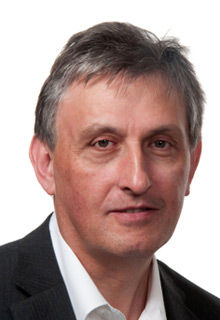Comment / A common wealth
 I am writing my last comment as HFMA president from a rain-swept Melbourne. At the invitation of the Australian Health Services Financial Management Association, a small delegation from the UK was invited to take part in its annual conference. We have also taken the opportunity to visit health organisations in and around Victoria.
I am writing my last comment as HFMA president from a rain-swept Melbourne. At the invitation of the Australian Health Services Financial Management Association, a small delegation from the UK was invited to take part in its annual conference. We have also taken the opportunity to visit health organisations in and around Victoria.
The state of Victoria, in south-east Australia, is where the NHS took some of its inspiration 10 years or so ago to develop its own tariff-based payment system for funding secondary care.
The funding system in Australia is a combination of Commonwealth government (national) funding and territory (regional) funding, although there are many people who opt out of the state system by buying private insurance.
We have learnt of the tensions between these two funding streams – the push and pull of who pays. But we have also learnt that, while tariffs have their imperfections, they have worked. Victoria appears relatively more efficient than elsewhere in Australia, driven by 10 years of the need for efficiency that tariff-based approaches demand.
The broad challenges facing the Australian health service are the same as those elsewhere – an ageing population, chronic disease and rising obesity levels (more than half the population is overweight and a quarter obese). From a tariff perspective, the issues are also similar. How can they use the payment system to support better outcomes and support the redesign of services to tackle new challenges? Using payments to reward and incentivise non-episodic care is a focus and remains a work in progress.
I hope this connection between our two associations can be the start of a mutually advantageous alliance – an opportunity to swap notes and share ideas, challenges and solutions. We have so much in common. There is much to learn as we meet these common challenges. There is no need to reinvent wheels on both sides of the globe if evidence and experience already exists for how to tackle these issues – or how not to tackle them. Perhaps we could even import the Australian characteristic of facing up to life with infectious optimism!
This has been an amazing year for me that has passed all too quickly. It has been a landmark year for our national health service. Structural change, the Francis report and the Berwick review of patient safety will have a lasting impact on how we manage services. The tightening economic outlook also continues to push us to think long and hard about how we can ensure services are sustainable, protecting our service for future generations.
My theme of ‘Knowing the business’ seemed to resonate with the times. I have been delighted by the feedback from members who took part in the events.
As I hand the presidency to my colleague Andy Hardy, I leave him much to do in embedding many of the things we have put in place this year and then building on them. Significant challenges lie ahead, but I see an association in good heart, on top of the issues, in tune with members and highly regarded by senior leadership. The association’s role remains vital.
However, in the end it is all about us as individuals and what we can do, supported by our professional body and others. We need to continue to be passionate to be part of a high-quality system and determined to work in a collegiate way with clinicians, managers and patients to deliver services we can be proud of.
Contact [email protected] Twitter: @tonywhitfield2
Related content
We are excited to bring you a fun packed Eastern Branch Conference in 2025 over three days.
This event is for those that will benefit from an overview of costing in the NHS or those new to costing and will cover why we cost and the processes.